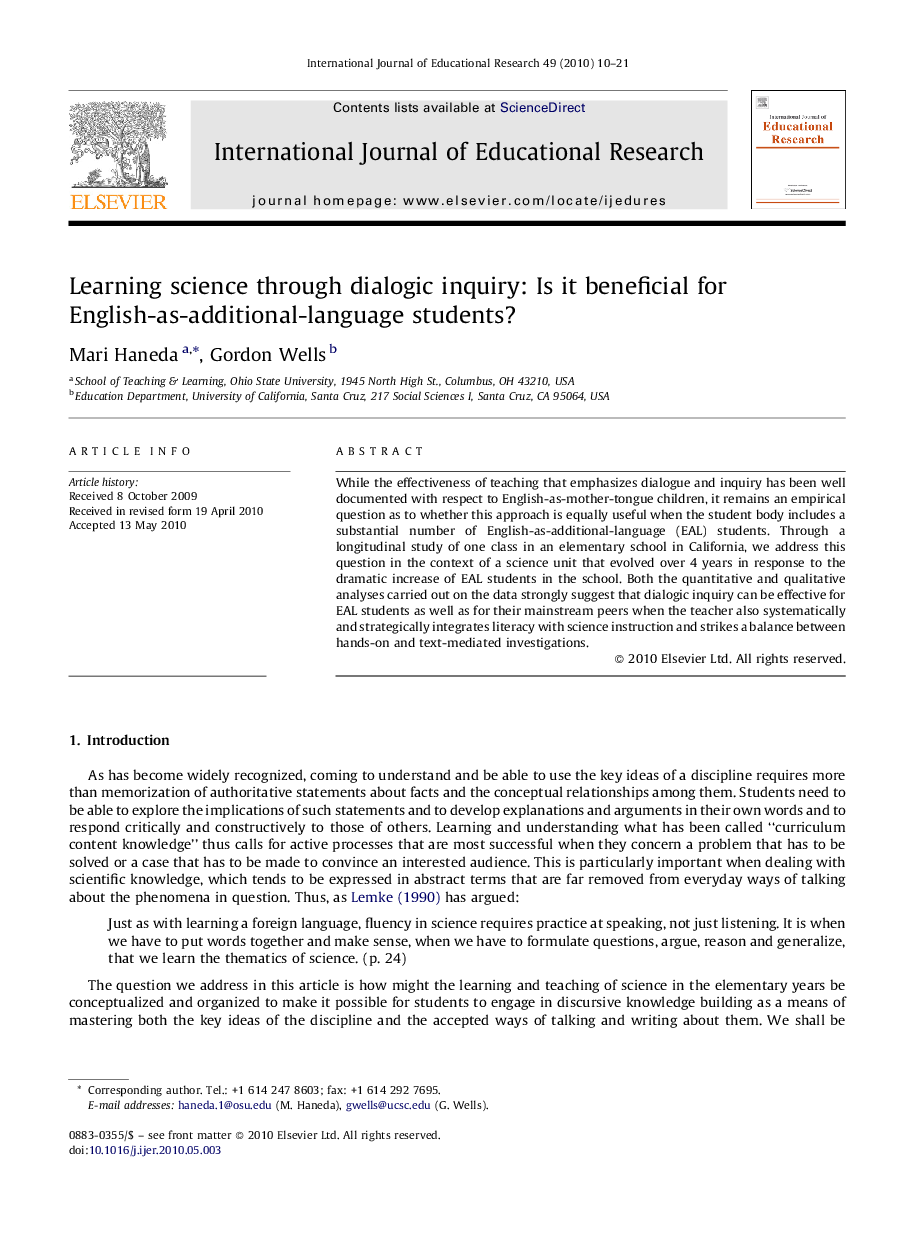| Article ID | Journal | Published Year | Pages | File Type |
|---|---|---|---|---|
| 357192 | International Journal of Educational Research | 2010 | 12 Pages |
While the effectiveness of teaching that emphasizes dialogue and inquiry has been well documented with respect to English-as-mother-tongue children, it remains an empirical question as to whether this approach is equally useful when the student body includes a substantial number of English-as-additional-language (EAL) students. Through a longitudinal study of one class in an elementary school in California, we address this question in the context of a science unit that evolved over 4 years in response to the dramatic increase of EAL students in the school. Both the quantitative and qualitative analyses carried out on the data strongly suggest that dialogic inquiry can be effective for EAL students as well as for their mainstream peers when the teacher also systematically and strategically integrates literacy with science instruction and strikes a balance between hands-on and text-mediated investigations.
